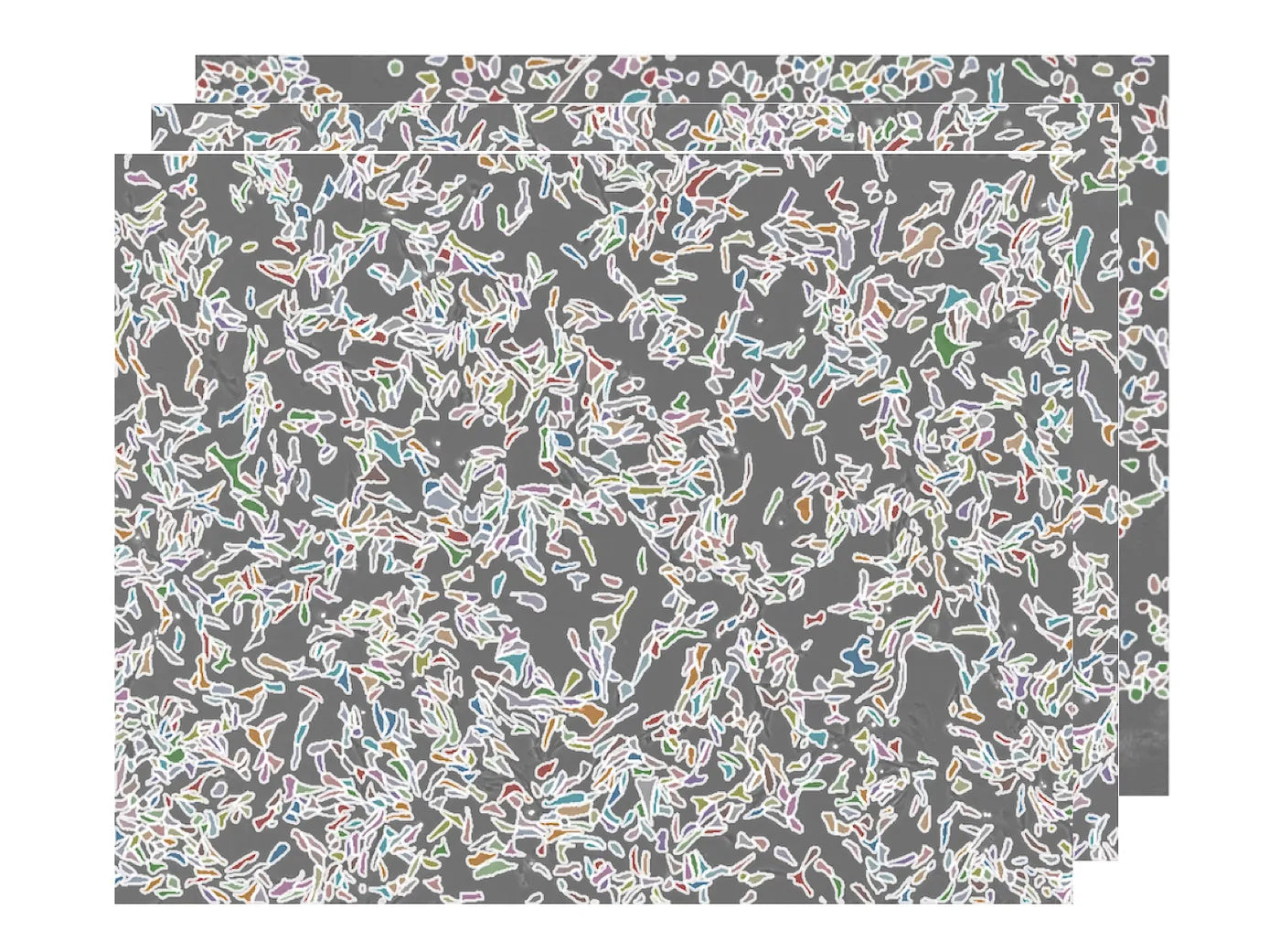Phenol Red has been a staple pH indicator in cell culture media for decades, providing researchers with a visual cue to assess the health of their cultures. However, recent studies have illuminated the potential negative impacts of Phenol Red on cell physiology, particularly its involvement in redox reactions that can affect cellular functions1. At Defined Bioscience, we recognize the need for more inert and reliable components in cell culture systems. Our supplement for serum replacement, HiDef® B8, can be used with phenol red-free and phenol red-containing media options to suit diverse research needs
The Problem with Phenol Red
Phenol Red is not merely a benign pH indicator. It participates in significant biochemical reactions that can alter the cellular environment. For instance, it has been shown to engage in redox reactions, particularly in the presence of light and certain enzymes, producing reactive oxygen species (ROS) that can stress cells and skew experimental outcomes1,2. Moreover, Phenol Red can interact with cellular components like myeloperoxidase (MPO), which is abundant in certain leukemia cells, leading to the formation of oxidative species that can potentially affect cell viability and skew results from assays intended to measure cell health and function.
Scientific Evidence of Phenol Red's Effects
Research indicates that Phenol Red can undergo oxidative halogenation via MPO, resulting in its transformation into various halogenated derivatives1. These reactions not only change the chemical nature of Phenol Red but also lead to alterations in cellular redox balance. Studies have shown that these transformations can significantly increase the cellular oxidative stress markers, such as glutathione disulfide, while decreasing the levels of reduced glutathione, an essential antioxidant within cells. These biochemical shifts can influence cellular responses and are particularly concerning in sensitive experiments where accurate measurement of cellular responses to external stimuli is critical.
Introducing HiDef® B8: A Versatile Solution
To address these concerns, Defined Bioscience developed HiDef® B8, a medium supplement maintenance and expansion of human pluripotent stem cells under defined, serum-free conditions. HiDef-B8 does not contain Phenol Red and can be used with basal media with or without Phenol Red, providing flexibility for researchers who are concerned about the effects of Phenol Red on their cell cultures. This versatility allows for precise control over the culture conditions, ensuring that the medium can be adapted to meet the specific needs of different cell types and research objectives.
Benefits of Using HiDef-B8
- Flexibility in Cell Culture: HiDef-B8 supports both the presence and absence of Phenol Red, accommodating a wide range of experimental designs and preferences.
- Enhanced Cell Health: The formulation of HiDef-B8 minimizes the oxidative stress on cells by excluding or including Phenol Red only when necessary, thus maintaining more stable and predictable cell behavior.
- Consistency and Reproducibility: By reducing the variables that can impact cell health, HiDef-B8 enhances the reproducibility of experimental results, which is crucial to advance research.
- Ease of Use: HiDef-B8 is formulated to require less frequent media changes and is compatible with weekend-free maintenance schedules, making it convenient for busy labs.
Practical Applications
HiDef® B8 is particularly beneficial in fields such as toxicology, pharmacology, and cancer research, where precise control over the cellular environment is crucial. For instance, in drug screening assays, the absence of Phenol Red ensures that the observed effects are due solely to the drug being tested, not confounded by the medium's components.
Conclusion
As cell culture technologies develop, the need for more refined and specialized media becomes apparent. HiDef-B8 represents a significant step forward in this direction, offering researchers a versatile, reliable, and more biologically inert medium. With HiDef-B8, researchers can focus more on their scientific inquiries and less on the variability introduced by traditional media components like Phenol Red, leading to more accurate and reproducible results.
At Defined Bioscience, we are committed to providing innovative solutions that enhance the integrity and reliability of cell culture research. HiDef-B8 is just one example of how we are helping researchers advance the frontiers of science.
References
- Caution for the routine use of phenol red - It is more than just a pH indicator. Morgan A, Babu D, Reiz B, Whittal R, Suh LYK, Siraki AG. Chem Biol Interact. 2019 Sep 1;310:108739. doi: 10.1016/j.cbi.2019.108739. Epub 2019 Jul 6.PMID: 31288001
- Total anti-oxidant capacity of cell culture media. Lewinska A, Wnuk M, Slota E, Bartosz G. Clin Exp Pharmacol Physiol. 2007 Aug;34(8):781-6. doi: 10.1111/j.1440-1681.2007.04637.x. PMID: 17600557


